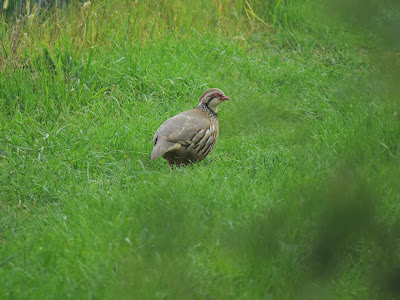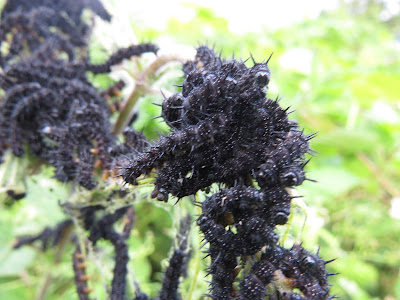The only other bird record of note was a Kingfisher on the
Wiske. This shouldn’t really be news but this was only my second sighting of
the year. I’m not clear what has happened But after a really strong recovery in
numbers in recent years they seem to have become very scarce again.
Insects weren’t up to much either although there was a
notable emergence of second-brood Peacock butterflies on the 24th
and I saw a dozen of these pristine insects along the railway footpath that
evening…
And this is (I think) a Ruby Tiger caterpillar seen the same
day…
I also managed to add another couple of species to the
village flower list. Bellflowers are obviously like buses, I saw my first last
week and then two more turn up with both Harebell and Peach-leaved Bellflower seen
this week.
And I also found this lovely Field Scabious…
I’ll finish with a brief excursion I took outside the parish to see
my first Green-flowered Helleborine this afternoon. We found just a single
plant, and a slightly battered one at that, in an area of old woodland but
really nice to see what is a distinctly scarce flower in northern England.























